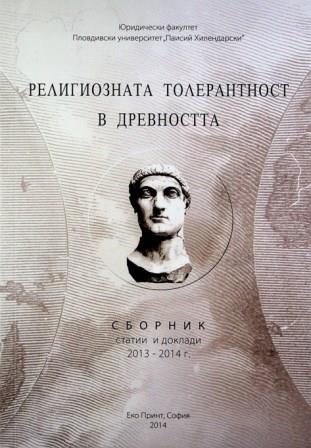За формата на "Медиоланския едикт"
About the Form of the "Edictum Mediolanum"
Author(s): Maria Kostova
Subject(s): Law, Constitution, Jurisprudence, Canon Law / Church Law, Roman law
Published by: Пловдивски университет »Паисий Хилендарски«
Keywords: edictum mediolanum; form
Summary/Abstract: The acts of the Roman emperors were defined as constitutions. In the historical sources instead of the term constitution often occur terms as– еdicta, decreta, mandata, еpistulae, rescriptum, subscriptions, which indicate various types of constitutions The explorers of the constitution, issued by emperors Constantine and Licinius in 313, have commented on the technical question concerning the form of this constitution. Many scholars use edictum Mediolanum, but some who have been examining in details the form of the text consider that this is a contravercial issue defining the text as edictum. The Latin text of the constitution of Constantine and Licinius is translated into Greek by Eusebius of Caesarea, who used in the beginning of the text the Greek substantive διάταξις ‘in order of’ which implies the idea for mandatum. The Greek word διάταξις corresponds with the Latin form ordinanda in the text of Lactantius. However the Greek text doesn’t help us much, because the word διάταγμα, which is etymologically similar to διάταξις, is used to indicate also edictum.
Book: Религиозната толерантност в древността : Сборник статии и доклади 2013-2014
- Page Range: 71-79
- Page Count: 9
- Publication Year: 2014
- Language: Bulgarian
- Content File-PDF

